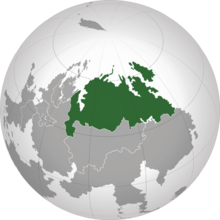Valimia
This article is incomplete because it is pending further input from participants, or it is a work-in-progress by one author. Please comment on this article's talk page to share your input, comments and questions. Note: To contribute to this article, you may need to seek help from the author(s) of this page. |
Federation of Valimia Liivan liittovalta (Valimian) | |
|---|---|
| Motto: "Veljeys, vauraus, vapaus" "Fraternity, Prosperity, Liberty" | |
| Anthem: "Punalippu Yhdistää" | |
 Location of Valimia (green) | |
| Capital | Paavalpori |
| Largest city | Festunki |
| Official languages | Valimian |
| Recognised regional languages | See Languages of Valimia |
| Ethnic groups |
|
| Demonym(s) | Valimian |
| Government | Federal Constitutional Parliamentary Republic |
| Seppo Toivalo | |
| Katariina Järvenpää | |
| Legislature | Valtiopäivät |
| Senaatti | |
| Eduskunta | |
| Establishment | |
• Valimian Revolt | March 12 1603 |
| 1702 | |
• Proclamation of Federation | 1922 |
• Current Constitution | 1981 |
| Population | |
• 2018 census | 112 439 120 |
| GDP (PPP) | estimate |
• Total | $4,1 trillion |
• Per capita | $36,721 |
| GDP (nominal) | 2018 estimate |
• Total | $1,6 trillion |
• Per capita | $14,581 |
| Gini (2018) | medium |
| HDI (2018) | very high |
| Currency | Taaleri (₮ (T)) |
| Date format | dd-mm-yy |
| Driving side | right |
| ISO 3166 code | VLM |
| Internet TLD | .vl |
Valimia (Valimian: Liiva [li:ʋɑ]), officaly the Federation of Valimia (Valimian: Liivan liittovalta), is a federal republic located in Eastern Berea and Northern Pamia. It borders Mascylla to the west, the North Sea to the north, Kodesh to the south and the Iremic Ocean to the east. Valimia is the world's largest country by land area comprising one-fifth of all land on Aurorum. Despite its population of 112 million, it is one of the most sparcely-populated countries. Almost 80% of its population is located either around the Gulf of Valimia or in the metropolitan area of its largest city Festunki. The capital of Valimia is its second largest city Paavalpori that holds significant historic and cultural influence.
Valimia is a constitutional parliamentary asymmetric federation since the passing of the 1981 Constitution. The President serves as the head of state and the Prime Minister serves as the head of government at the behest of the Valtiopäivät. Highest political authority in the country recides in the democratically-elected Valtiopäivät that is composed of the Eduskunta and the Senaatti. Highest executive authority is exercised by the State Council (Valimian: Valtioneuvosto) led by the Prime Minister while the Valimian Supreme Administrative Court holds highest judicial authority.
Valimian statehood traces its existence back to the Valimian Duchies formed around the Gulf of Valimia as a result of Semitarian conversion and crusades during the late 900s. Despite later Chaghanid conquest and rule, Semitarism would continue to spread across Valimia consolidating power in the Duchy of Taijasmaa. The weakening position of the White Horde in the late 1500s and the increasing discontentment of the Valimians towards their non-Semitar rulers resulted in the Valimian Revolt in 1603 that ultimately established the Kingdom of the Valimians. Expansions of territory and power by the Valimian state would result in the proclamation of the Valimian Empire in 1702. The empire expanded continuesly throughout the 18th century going beyond its geographic limitations and becoming one of the most signficant powers of its time. By the turn of the 19th century, Valimia would be sidelined by other rising powers in Berea but would remain a significant player on the world stage due to its massive population and area. Valimian stagnation was made evident by the end of the century with the Valimian defeat in the Valimo-Cuthish War of 1882. Bitterness over lost prestige and national humiliation would cause Valimia to join the Great War as a belligerent. The war was disasterous to the Valimian Empire with its outdated army unable to defend against the advance by the Central Alliance which had brought the empire near to capitulation although utlimately it would emerge victorious from the war.
During the post-war period, Valimia experienced a six-year-long period of instability fighting several civil and separtist conflicts. The weakening position of the country would result in the abolition of its monarchy and the dissolution of its empire. In its stead, a democratic federation was established during which Valimian society was almost completely reorganised. Extensive internal reform and Valimian bitterness over the Treaty of Lehpold, would keep the country isolated and officially neutral throughout the post-war period. Valimia played a neutral anti-imperialist role during the Great Game often acting as a mediator between the two sides rising to prominence once more on the international stage. From the 1960s onwards, Valimia would begin opening itself further to the world seeing significant liberal economic reforms.
Today Valimia is a regional power able to exercise its influence in Eastern Berea and Northern Pamira. It is a pluralistic multinational society that is supported by a robust welfare state boasting a very high standard of living . Valimia posesses some of the largest deposists of natural resources in the world being one of the world's largest oil and gas exporters. As a nation with a long and varied history, it is home to several different UPESCH World Heritage sites. Valimia holds a permanent seat in the Security Council of the Assembly of Nations and is a member of several international organisations.

